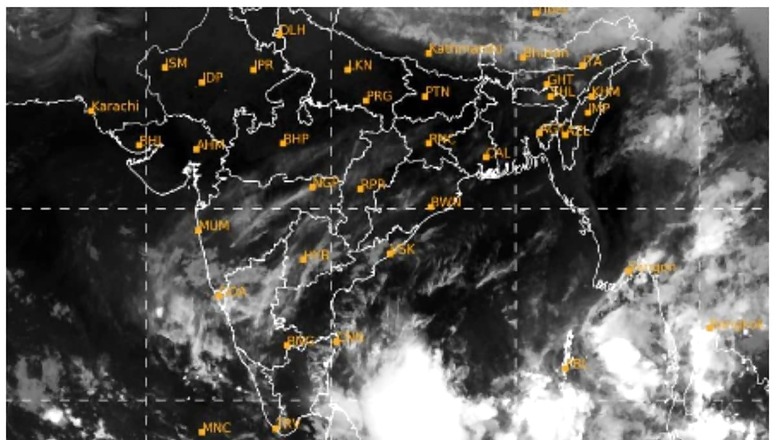
views
Scientists on Friday said cyclonic storms in the Bay of Bengal and the Arabian Sea are becoming more intense and lasting longer due to climate change.
The researchers attribute the changes in the cyclogenesis, particularly over the Indian Ocean, to the increase in the global mean temperature.
According to a study titled ‘Changing status of tropical cyclones over the North Indian Ocean’, the Arabian Sea saw a significant increase in the intensity, frequency, and duration of cyclonic storms and very severe cyclonic storms during the period of 1982 to 2019.
The study found a 52-per cent increase in the frequency of cyclonic storms in the Arabian Sea during the recent epoch (2001–2019) while there was an 8 per cent decrease in the Bay of Bengal.
“Cyclones nowadays can retain their energy for quite a long number of days. One example of this trend was Cyclone Amphan, which continued to travel over land as a strong cyclone and resulted in massive devastation. As long as oceans are warm and winds are favourable, cyclones will retain their intensity for a longer period,” said Roxy Mathew Koll, a climate scientist at the Indian Institute of Tropical Meteorology and lead author of Intergovernmental Panel on Climate Change (IPCC) reports.
Cyclone Mocha, which rapidly intensified into a very severe cyclonic storm, is predicted to make a disastrous landfall in Bangladesh and western Myanmar with wind speeds reaching up to 175 kmph. The World Meteorological Organization has warned of violent winds, floods, and possible landslides in Bangladesh, and inundations of low-lying areas in Myanmar.
According to the Ministry of Earth Sciences’ report titled ‘Assessment of Climate Change over the Indian Region’, climate model simulations project a rise in tropical cyclone intensity (medium confidence) and precipitation intensity (medium-to-high confidence) in the North Indian Ocean basin.
The report compared pre-1950 and post-1950 periods and found the number of severe cyclonic storms rose from 94 to 140 (a 49 per cent increase) in the Bay of Bengal region and from 29 to 44 (a 52 per cent increase) in the Arabian Sea region annually.
Observations indicate that the frequency of extremely severe cyclonic storms over the Arabian Sea has increased during the post-monsoon seasons of 1998 to 2018. There is “medium confidence” in attributing this observed increase to human-induced SST warming.
“Sea surface temperatures are increasing. The mechanism behind the formation of cyclones does not change, but weather conditions are changing. Cyclones have been intensifying at a faster pace in the recent past. The reason behind this is not just an increase in the sea-surface temperatures but also rising ocean heat content,” said Dr MM Ali, Meteorologist and Oceanologist, Andhra Pradesh State Disaster Management Authority and Group Director – Atmosphere, ISRO (Indian Space Research Organisation).
Around 90 per cent of the energy trapped in the climate system by greenhouse gases goes into the oceans. The ocean heat content, which measures this gain in energy, reached a record high in 2022, according to WMO’s ‘State of the Global Climate 2022’ report.
Despite three consecutive years of La Nina conditions, 58 per cent of the ocean surface experienced at least one marine heat wave in 2022. In contrast, only 25 per cent of the ocean surface experienced a marine cold spell, the WMO said.
Global mean sea level is at a record high, having risen by 4.62 mm per year from 2013 to 2022, double the rate between 1993 and 2022.

















Comments
0 comment